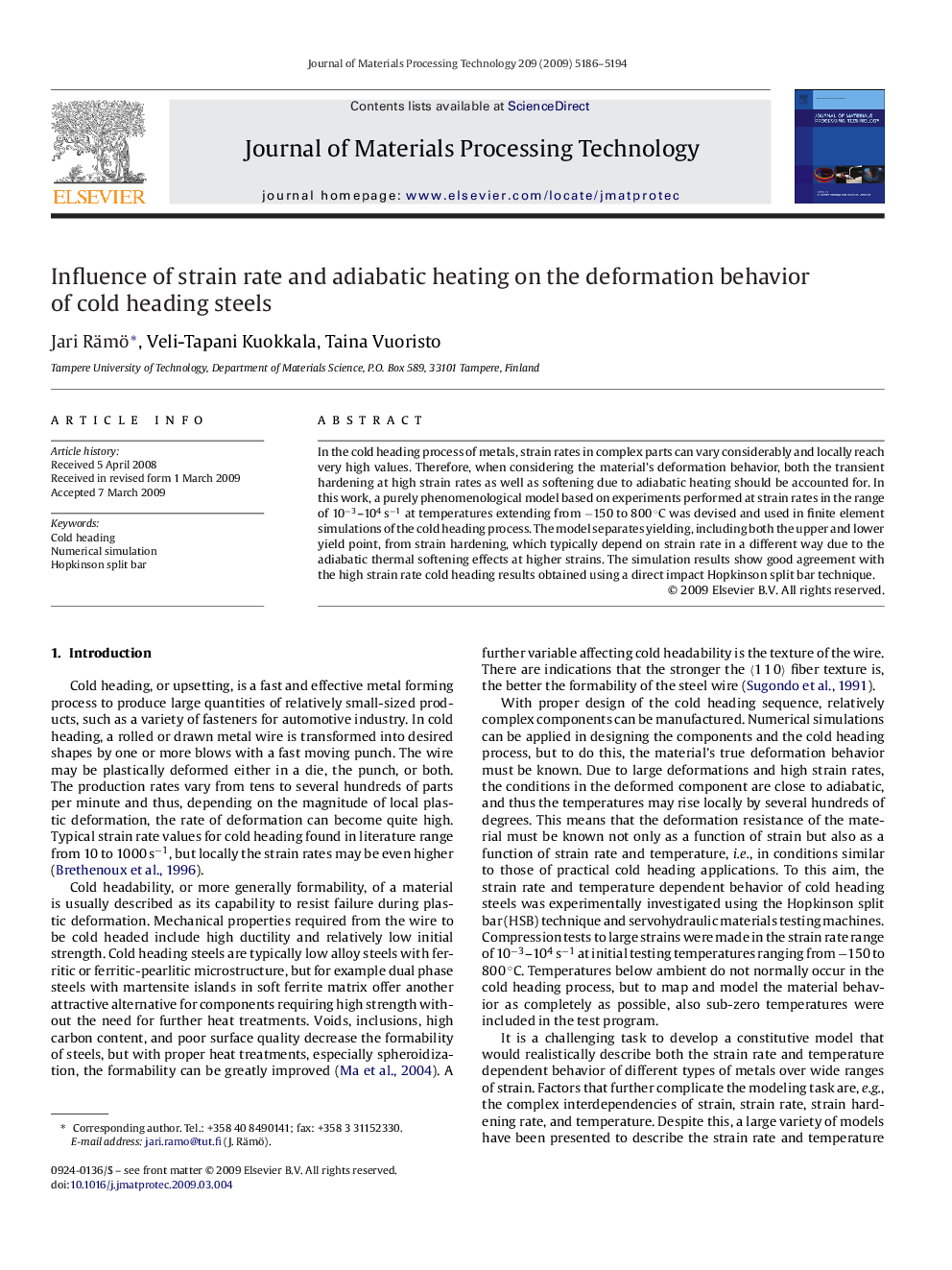| Article ID | Journal | Published Year | Pages | File Type |
|---|---|---|---|---|
| 793333 | Journal of Materials Processing Technology | 2009 | 9 Pages |
In the cold heading process of metals, strain rates in complex parts can vary considerably and locally reach very high values. Therefore, when considering the material's deformation behavior, both the transient hardening at high strain rates as well as softening due to adiabatic heating should be accounted for. In this work, a purely phenomenological model based on experiments performed at strain rates in the range of 10−3–104 s−1 at temperatures extending from −150 to 800 °C was devised and used in finite element simulations of the cold heading process. The model separates yielding, including both the upper and lower yield point, from strain hardening, which typically depend on strain rate in a different way due to the adiabatic thermal softening effects at higher strains. The simulation results show good agreement with the high strain rate cold heading results obtained using a direct impact Hopkinson split bar technique.
